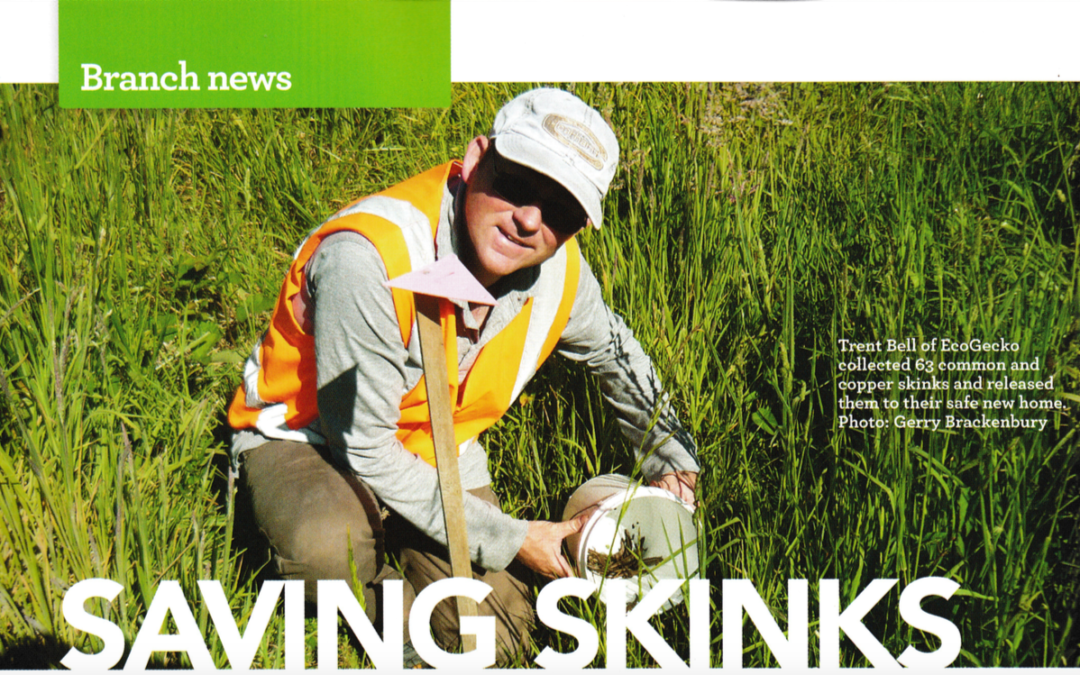At Cuttriss, we love feel good environmentally friendly projects – and were delighted to see one of our recent projects in Forest & Bird magazine.
Did you know you can join Forest & Bird and receive a free magazine subscription? Full story below:
SAVING SKINKS
More than 60 native skinks are enjoying a new home thanks to some creative thinking by Forest & Bird’s Lower Hutt branch, as Gerry Brackenbury explains.
It started with a heads-up from Forest & Bird’s national office. Fourteen hectares at Kelson, Lower Hutt, were about to be subdivided for housing. Would the Lower Hutt branch like to check it out? We did. Adjacent to Belmont Regional Park, the proposed housing site presented as a classic regeneration of māhoe, mānuka, tree fern, and every kind of weed.
We contacted Cuttriss Ltd, the planners for the developer, and were pleasantly surprised and encouraged by their environmentally aware development plan. This included protecting a healthy and reasonably sized wetland – small streamlets would be saved – and they even had a fish relocation plan. Mature native trees would not be cut down.
But in our discussions, I realised there was no plan
for lizards if they were found to be present on the development site. I suggested that, since the branch was putting in a formal RMA submission, they might want to do a herpetological survey before the bulldozers went in. The developer agreed to pay for a survey and to collect any lizards found and release them to an appropriate site.
Trent Bell, from EcoGecko, was given the job, and his team laid 100 pitfall traps over two weeks. They struck gold and found a reasonable number of skinks on the Kelson site, but then we had to work out what to do with them. Luckily, two years ago, the Lower Hutt branch had started predator-control work at Manor Park, a former rubbish dump that was being restored. It had been identified as an important ecological wildlife corridor by Old Blue Russell Bell and turned out to be the right habitat for the skinks and was pest free.
The Department of Conservation gave the green light for Trent to release the skinks at Manor Park. We moved 63 skinks in total, mainly common skink (Oligosoma polychroma) and copper skink (Cyclodina aenea). They were released with a small ceremony.
The challenge now is to keep our foot on the throat of the pests that will inevitably return to Manor Park. In this boutique site of only 4ha, apart from the rats and mice, we’ve also removed 11 hedgehogs and one feral cat.
I’m also experimenting with “skink palaces” using pallets filled with bark chip and covered with old carpet, large branches, rocks, and any organic material to hand. Our branch volunteers will soon plant low native species such as shrubby tororaro close to the skink middens.
As an aside, in my RMA submission, I suggested that the developer put a covenant on each section he sells that would limit the future owner to one cat, which must be chipped and spayed. To his credit (and my amazement), he agreed.
However, this was a Pyrrhic victory. The Lower Hutt City Council will not monitor or check on cat owners or their cats. Forest & Bird has tried hard to get the council to make limiting cat ownership a consent condition for all future subdivisions with no luck so far. The politics of cats will haunt us for years to come.




